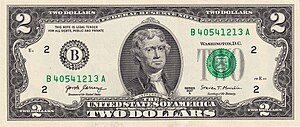Transmedia Storytelling Learning Method Join our blog to learn globally Jules Verne School producing Viral Learning "A mi no me califica el maestro, me evalúa el mundo" "Transformando el memorizar en recordar"
domingo, 27 de marzo de 2016
Activities for 22/IV/16
Activities for 21/ IV / 16
MATH
sábado, 26 de marzo de 2016
Activities for 19/IV/16
Reading and viewing
Activities for 20/ IV / 16
Activities for 18/ IV / 16
viernes, 25 de marzo de 2016
Activities for 15/IV/16
Activities for 14/IV/16
jueves, 24 de marzo de 2016
Activities for 13/ IV / 16
Activities for 11/IV/16
martes, 22 de marzo de 2016
Activities for 08/IV/16
Activities for 07/ IV/16
lunes, 21 de marzo de 2016
Activities for 5/IV/16
Activities for 5/IV/16 ( Reading Power)
viernes, 18 de marzo de 2016
Health Food by Milena
Normas y reglas de convivencia Milena
miércoles, 16 de marzo de 2016
El instructivo
martes, 15 de marzo de 2016
Activities for 16/III /16
Activities for 16/ III/16
Theme: Staying HealthyOn a summer day
When I see the title I remember when I went yo the beach.
I like the story because they play funny things and they play all the day.
Isabella Flores
Reglas y normas
lunes, 14 de marzo de 2016
Benito Juàrez
Benito Juárez
Benito Juárez
Biografía de Juárez
Benito Juárez
Hijo de Marcelino Juárez y Brígida García, matrimonio indígena de humilde condición, Benito Juárez quedó huérfano siendo niño y cursó sus primeros estudios en su pueblo natal. Tenía veinte años cuando ingresó en el Instituto de Ciencias de Oaxaca, donde se licenció en derecho. Su preocupación por la realidad social y en particular por la situación de los campesinos lo llevó a expresar sus puntos de vista liberales y a participar activamente en política.
Isabella Flores, Milena y Miguel Ángel
Benito Juárez
US money
Billetes de dólarEditar
| Denominación ($) | Rostro | Muestra |
|---|---|---|
| $1 | George Washington |  |
| $2 | Thomas Jefferson |  |
| $5 | Abraham Lincoln |  |
| $10 | Alexander Hamilton |  |
| $20 | Andrew Jackson |  |
| $50 | Ulysses S. Grant |  |
| $100 | Benjamin Franklin |  |











































